The Mesoamerican ball game was played throughout Mesoameria-Mexico, Guatemala, Belize, El Salvador, Honduras. In addition, a version of the game was played by the Hohokam in Arizona and there is evidence of the games (stone yokes) found in the Caribbean islands. For the Maya, the ball game was culturally and ritually important. Most major Maya centers have a ball court.
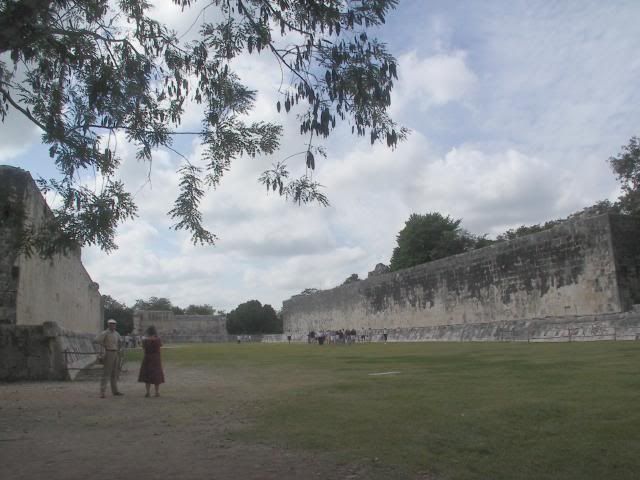
The ball court at Chichén Itzá is shown above.
The earliest Mayan ball courts are in the lowlands-in Belize at Cerros and Colha. These ball courts were constructed after 400 BCE. By 200 CE, the ball game occupied a central place among the Maya elite. This was often a political game with religious overtones. Masonry ball courts are always located close to the central core of the monumental architecture of the lowland Maya sites.
The ball game was a team event played on a special court with a solid rubber ball. The size and weight of the ball varied from site to site and through time. Some archaeologists have suggested that the size of the ball was determined by the size of the hole in the stone scoring ring mounted on the side of the ball court. The ball could be up to eight inches in diameter (about the size of the modern volleyball) and could weigh nine pounds or more.
The clothing of the players-primarily determined from the art work of the time period-included a thick girdle or yoke worn around the waist. This provided some protection from the ball and was probably also used for striking the ball with more force. Some images show the players with chest protectors which had been inserted in the yoke and stood upright in front of the chest. Some of the players also wore kneepads, and some are shown with the pad only on the right knee.
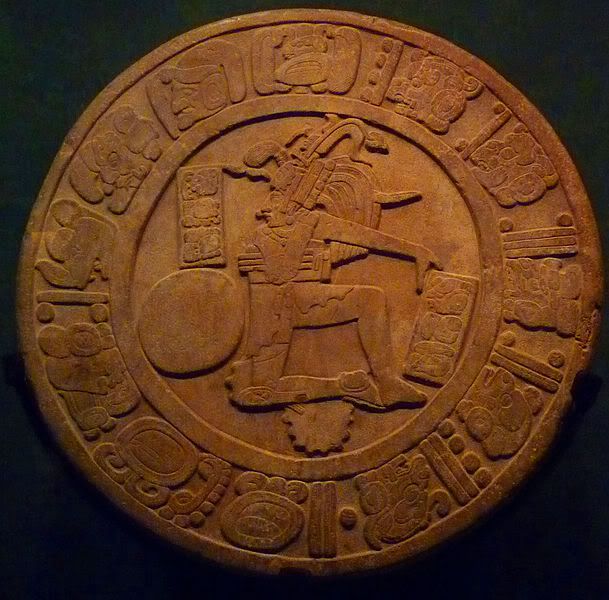
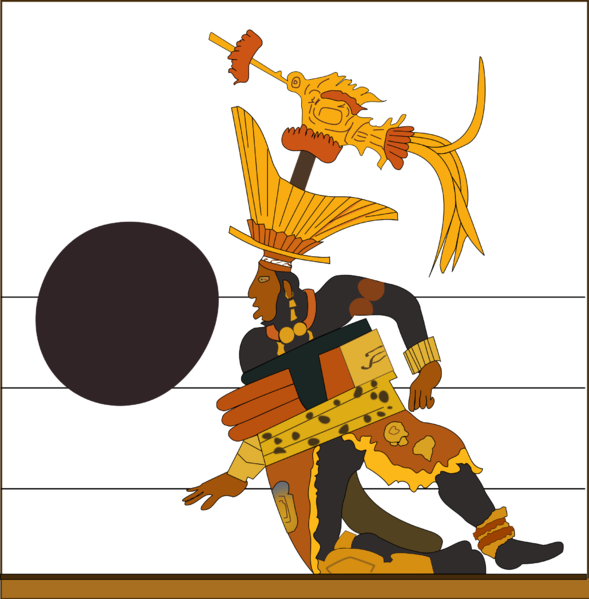
The players also wore helmets: the images of helmeted players have been misinterpreted by popular pseudoarchaeologists as aliens from other planets.
For the Maya, the ball game was more than a sporting event. Sometimes it was a substitute for warfare. At times, human sacrifice was associated with it. This may have been the sacrifice of the losing team.
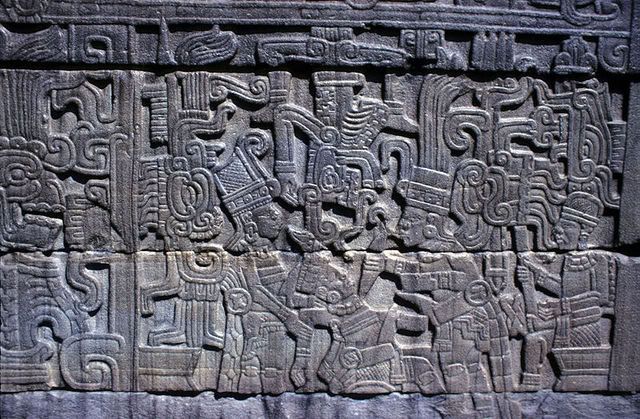
The carving above shows human sacrifice at a ball game.
The rules of the game seem to have varied from place to place. The ball players could use only their head, shoulders, and hips to hit the ball. The two teams of players faced each other lined up parallel to the long axis of the playing field.
The courts are generally between 49 and 115 feet in length, 10 to 39 feet in width. They are demarcated by two parallel platforms. Sometimes the platforms are banked as if to accommodate seating; at other times they are bounded with sharply vertical walls. Usually a stone ring is anchored to the side wall about 6.5 to 10 feet off the ground. The interior diameter of the ring is between 8 and 16 inches. Shooting the ball through the ring gives an instant win.
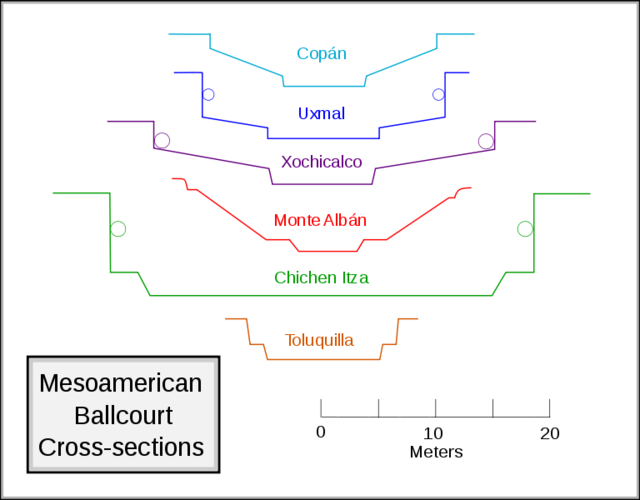
The size of the ball court does not seem to be related to the relative importance of the Maya city: the powerful Maya city-state of Tikal has a relatively small ball court. On the other hand, one of the largest ball courts is at Chichén Itzá in Yucatan. Here the court is 551 feet in length and 229 feet wide.
The Mayan site of El Tajín has over a dozen ball courts (more than 17) which have been uncovered by archaeologists.
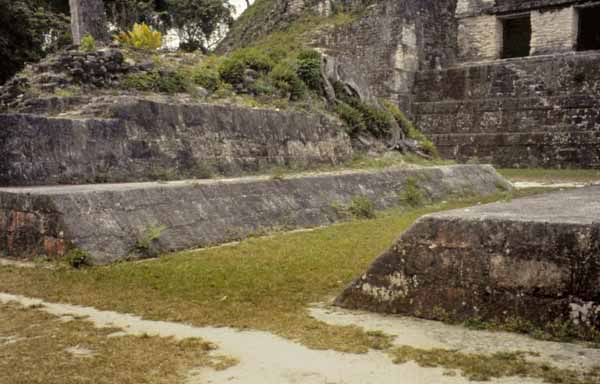
The ball court at Uaxactun is shown above.
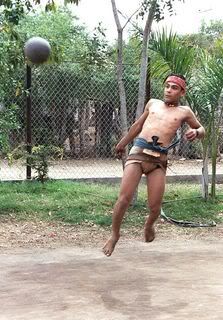
A modern ball player is shown above.
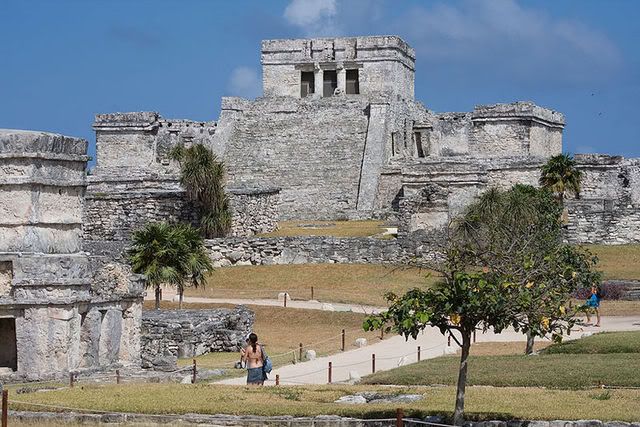
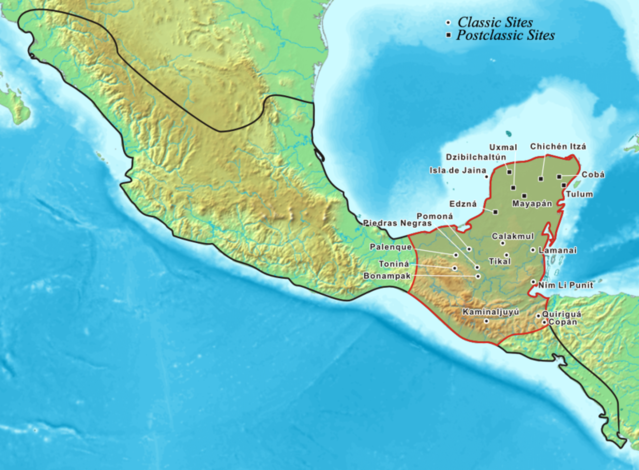
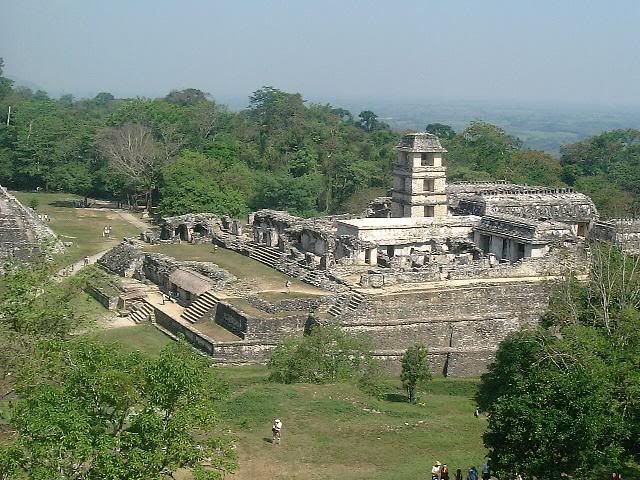

Leave a Reply